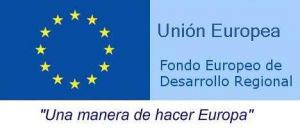Feel@Home
Full Experience Extended Living @ Home
- Funded by Spain Ministry of Industry (EUREKA cluster “Celtic”) (TSI-020400-2008-57 y TSI-020400-2010-49)
- Duration: 01/01/2008 to 31/03/2011
- Funded by Spain Ministry of Industry (EUREKA cluster “Celtic”) (TSI-020400-2008-57 y TSI-020400-2010-49)
- Duration: 01/01/2008 to 31/03/2011
- http://www.feelathome-celtic.eu/
When thinking about intelligent households, most people usually link this idea with the concept of home automation, where it is possible to control locally or remotely the state of the appliances of the house. In the Feel@Home project, the image of an intelligent home was expanded to give birth to the “Extended Digital Home” concept. In such vision, a digital home environment provides support for handling multi-user service offerings and multi-home collaboration. It ensures not only an intelligent management of Home Area Network devices and services, but also considers the administration of any information generated by the members of a household (their photos, videos… their “digital personal life”). Moreover, such digital home can provide a new interaction paradigm that enables seamless, personalized and context-aware service delivery, to various types of user devices and to any user location.

From the very beginning, security was considered as one of the most crucial factors that had to be addressed in order to create a trusted digital home. Due to the specific technological and operational requirements from the industrial partners, it was necessary to follow a two track unified process (2TUP), where the design of the functional security architecture was performed in parallel with the development of the prototypes (e.g. IMS and VPN). As a result, it was possible to provide a meaningful analysis of the different security requirements, which was subsequently used to create a functional security architecture that was seamlessly and successfully instantiated into the existing Feel@Home architecture [1].
Another important factor that must be carefully considered in the design of a trusted digital home is the perception of security from the point of view of the user. Not only must the usability of the different digital home security mechanisms be high, but also users need to know that those security mechanisms are being properly applied. For this very purpose, it was necessary to provide a throughout study on the different best practices that can be used to improve the usability of the security mechanisms in a digital home. The lessons learnt by said study were used during the course of the project to create different elements, such as an extensible framework for authentication components and a simple mechanism that allowed the implementation of different security levels inside a single household.
References
- Rodrigo Roman and Javier Lopez and Olivier Dugeon and Marc Lacoste and Pierre Plaza Tron and Marta Bel (2012): Advanced Secure Multimedia Services for Digital Homes. In: Information Systems Frontiers, vol. 14, pp. 527-540, 2012, ISSN: 1387-3326.
Proyecto TSI-063000-2021-26 financiado por:




